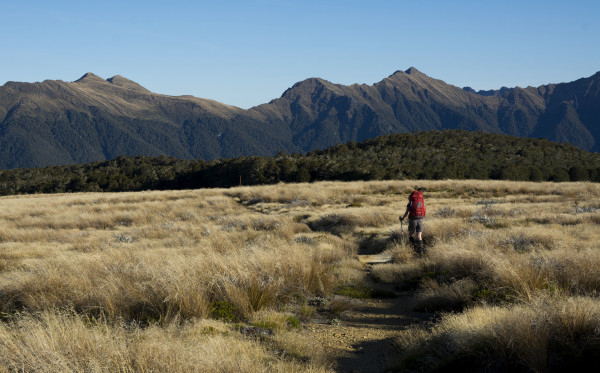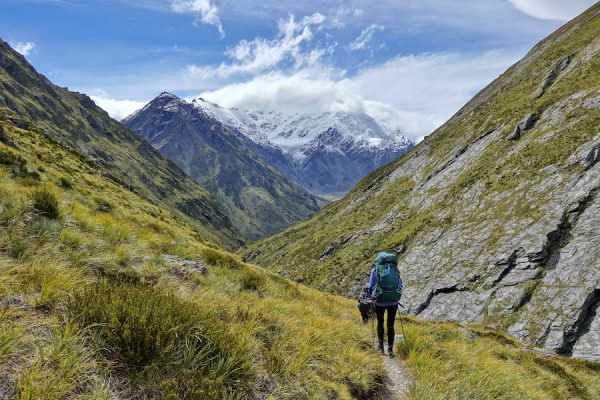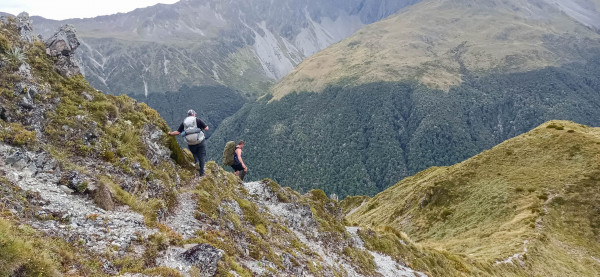How to avoid becoming an injury or search & rescue stat in summer
With summer setting in and Kiwis turning their attention to holiday mode, chances are you’re amongst the hundreds of thousands of people dusting off packs, finding the tent and lacing up those boots for an outdoor adventure.
Tramping, hiking, bush walking – whatever you choose to call it – continues to be one of our most popular outdoor recreation activities. During 2021 the popularity of tramping amongst NZ adults reached an all-time high, with nearly 13% more NZ adults participating compared to 2019. More than 1.14million NZ adults went tramping in 2021, maintaining its place as one of the most popular recreation activities in Aotearoa.
Tramping participation soars well above many of the traditional sports, and most other recreational outdoor activities. Chances are, this summer, you’ll find yourself out on a bush walk at some stage, even if only for a few hours at a time.

In preparation for summer, here’s the NZ Mountain Safety Council’s seasonal outlook, and top tips to avoid being one of the stats.
Using historical injury and search and rescue (SAR) data we can estimate how summer 2022/23 will look in terms of tramping incidents.
We all hear about the most extreme examples, those stories that make the news headlines with people stuck in remote locations or missing for days, drama filled reading that paints a picture of the outdoors being a place of impending danger and doom. The reality, however, is very different, and 99% of the time it’s fun, enjoyable and incident free.
In saying this, incidents do occur, people do get injured or require emergency help. Overall, with tramping participation on the increase, we can expect to see more injuries. Through the three official summer months (December 2022 to February 2023) we anticipate around 3,000 people will be injured tramping. However, not all injuries are the same…
Looking closer at tramping injuries, we break them into three categories: minor, moderate and severe. To do this, we use a combination of the ACC claim cost, days off work and injury type (sprain, fracture etc.)
This summer we expect to see about…
- 1,800 minor injuries, most likely soft tissue damage caused by rolled ankles and twisting knees. These injuries, while painful and annoying at the time, typically won’t have any long-term negative impact.
- 1,200 moderate injuries, often due to trips and falls resulting in minor fractures or head knocks. These injuries typically require some time off work and likely a bit of rehab before returning to full health.
- 160 severe injuries, again mainly due to slips, trips and falls on rough and uneven terrain. These result in bad injuries that take more time to recover from, usually meaning the patient can’t work for a longer period.

Furthermore, this summer we also expect to see about…
- 170 SAR callouts involving about 270 trampers, hunters, mountain bikers, mountaineers or trail runners.
- Most of these SAR callouts will be for trampers, around 220 of them. Additionally, we expect about 17 hunters, 13 mountain bikers, 14 mountaineers and 3 trail runners.
- Delving into specific tracks, the walk with the most SAR callouts in NZ is the Tongariro Alpine Crossing, and we would estimate that trend continues this summer with around 30 people needing SAR support over the three summer months.
So, how do you avoid becoming one of these statistics this summer? Here’s our top 5 tips for avoiding injury or needing SAR help…
1. Choose a walk/track/trip that is suitable for you and your group – it sounds simple, but many incidents occur because the plan was too ambitious or not suitable for everyone. Prioritise factors like:
- The time you have available / length of the walk
- Difficulty
- Weather forecast
2. Most injuries occur on uneven or loose terrain – like the descent from Red Crater on the Tongariro Alpine Crossing – vigilance on this type of terrain is essential.
- Move with care and attention (awareness)
- Place your feet with consideration or caution, especially on loose rocks, wet ground or over tree roots
- Give yourself plenty of time to navigate tricky sections by leaving early in the day
- When descending on loose rocks, face directly out from the slope and push your heels in with each step
3. Protect your ankles and knees by:
- Warming up – some light stretches help
- Wear comfortable (worm in) boots, not shoes
- Reduce your pack weight, but don’t skimp on the essentials
- Help each other when going over fallen logs, under tree branches, or over terrain that requires you to be off-balance (especially when wearing a pack)
4. Prevent falls, and we don’t just mean from cliffs or bluffs
- Big falls are often obvious – you can see the cliff edge – but smaller falls, like a meter or two, can be far more common and just as damaging
- This type of avoidance requires self-awareness and vigilance, ask yourself ‘what would happen if I slipped here?’
5. Pack the essentials, every time
- A waterproof jacket deserves a spot in your pack, even on short walks in fine weather. They can be a life saver if the weather changes, you get delayed, or if someone gets hurt
- Multiple warm layers, like thermals and fleece, are better than one big jacket
- Leave your cotton clothes at home, when wet they take heat away from your body
- Carry plenty of water. For example, pack at least 2L water for a full day walk.

Using Plan My Walk you’ll be well on your way to a safe summer of adventures. With this free tool you can:
- Find suitable tracks and ensure they meet your groups needs
- Get all the information you need about the walk and read reviews from other walkers
- Get a track weather forecast and alerts like weather warnings or track damage
- Get a recommended gear list to ensure you have everything you need
- Create a trip plan to share with a contact who will then know where you are going and when you’ll be back
The knowledge and tools are out there to help you prepare for your adventures; it is now up to you. Have fun!
Header photo: Toaroha Hokitika Lower Whitcombe Track, Jonathan Astin